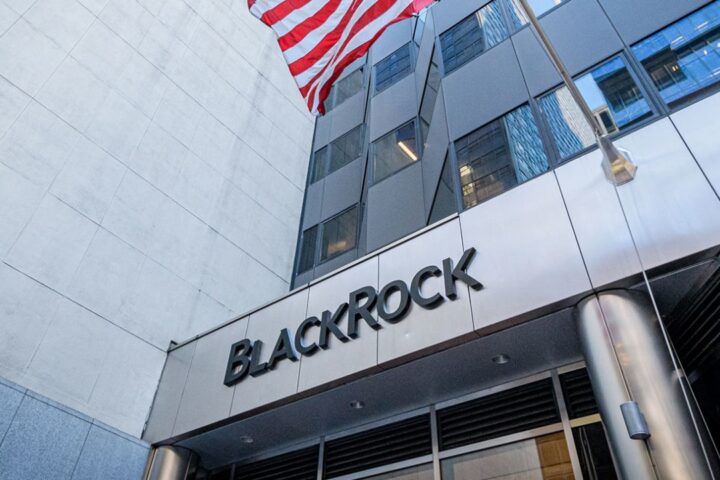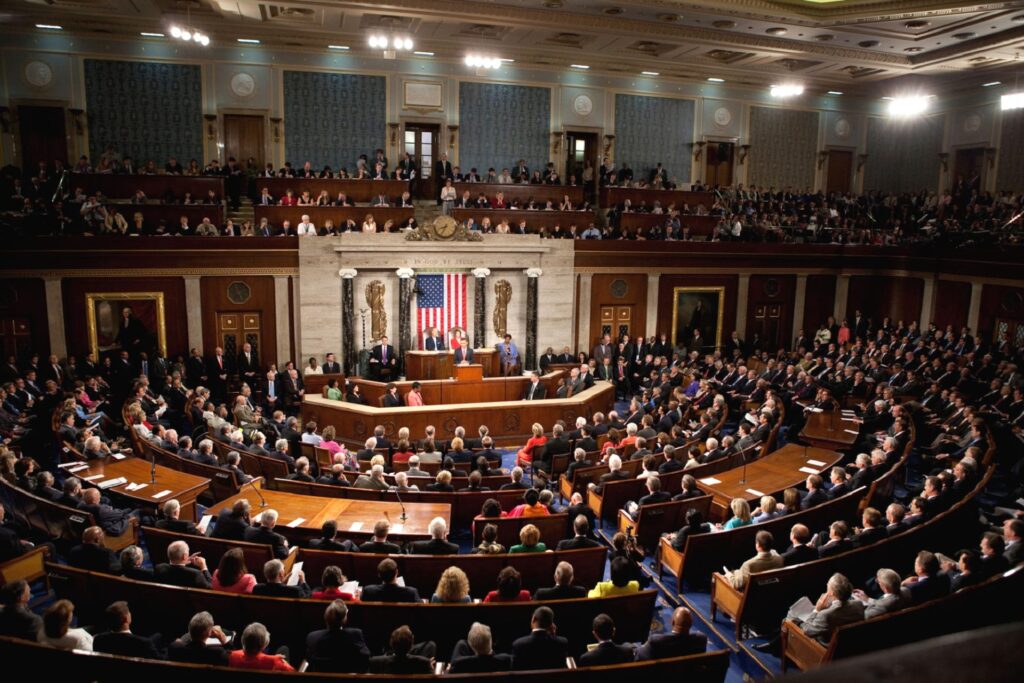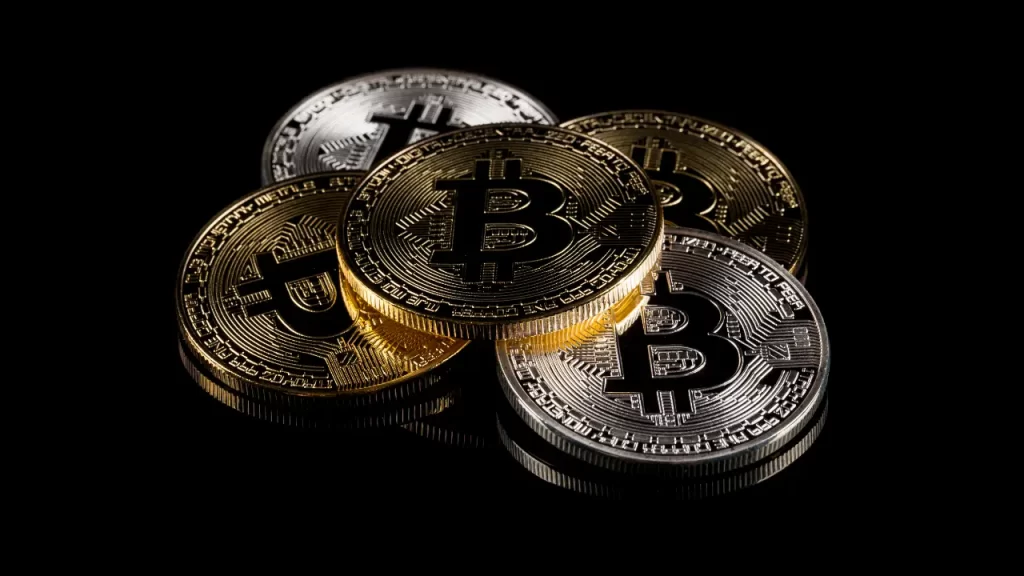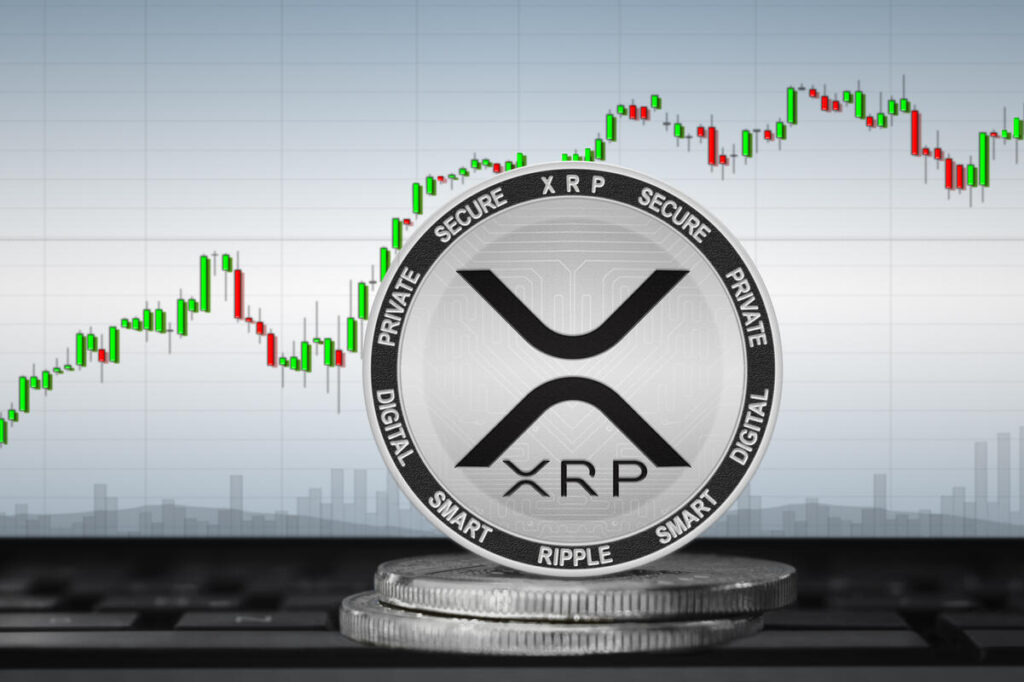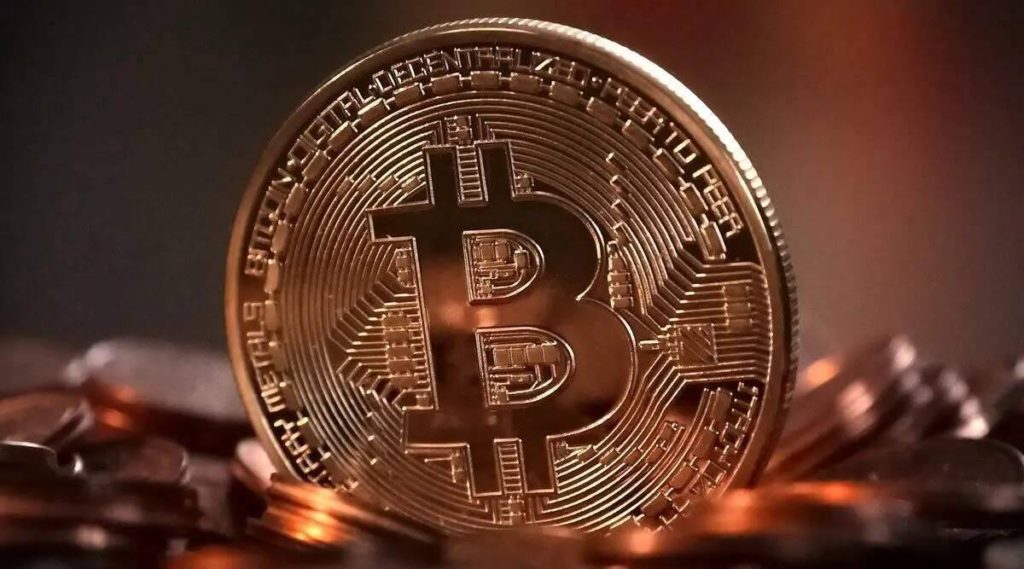MicroStrategy (MSTR), led by Bitcoin advocate Michael Saylor, closed at a record market capitalization on Wednesday, driven by investor confidence and Bitcoin’s steady performance near all-time highs.
“MSTR just closed at an all-time high market cap,” Saylor posted on X, formerly Twitter, celebrating the company’s latest financial milestone.
MSTR Surges Alongside Bitcoin’s Bullish Momentum
MicroStrategy’s stock has seen significant appreciation in recent weeks.
According to Google Finance, the company’s shares climbed 21.52% over the past month, ending Wednesday’s session at $455.90.
Bitcoin, which underpins the firm’s strategy, has also gained 10% over the past 30 days.
It peaked at $122,884 earlier in the week before pulling back slightly to $118,413 at the time of writing, according to Nansen data.
The close correlation between Bitcoin’s performance and MSTR’s stock has been a consistent feature of the company’s market behavior.
Options trader Sean Trades shared optimism about MicroStrategy’s trajectory, stating the stock is “gearing up for the next leg to all-time highs.”
Despite Record Cap, MSTR Shares Still Below Peak
Although MicroStrategy now boasts a record valuation, its stock price remains nearly 19% below its all-time high of $543, last achieved in November 2021.
To fuel its aggressive Bitcoin acquisition strategy, the firm continues to raise capital by issuing new stock.
That approach has enabled it to significantly expand its digital asset holdings.
On Monday, the firm disclosed in a filing with the U.S. Securities and Exchange Commission that it had purchased 4,225 more Bitcoin, investing $472.5 million.
S&P 500 Qualification and Future Outlook
MicroStrategy’s ongoing growth could position it for entry into the S&P 500.
Jeff Walton, vice president at Strive Funds Bitcoin Strategy, highlighted on Wednesday that this marks the 11th consecutive day that MicroStrategy has qualified for inclusion in the index.
In a May Financial Times documentary titled Michael Saylor’s $40 Billion Bitcoin Bet, Walton predicted that Strategy could become “the number one publicly traded equity in the entire market,” citing its anticipated financial strength from Bitcoin.
The company is scheduled to release its latest earnings report on August 5.
Despite posting net losses over the past three quarters, the firm remains committed to its crypto-centric growth model.
With Bitcoin hovering near peak levels and the company’s strategy gaining institutional recognition, MicroStrategy’s trajectory remains closely tied to crypto market dynamics.
Efforts to advance three major crypto-related bills in the U.S. House hit a roadblock on Tuesday, as internal disagreements among Republican lawmakers forced a pause on a key procedural vote.
At the heart of the dispute is a push by some members of the GOP to include a ban on central bank digital currencies (CBDCs) in the legislation.
House Speaker Mike Johnson said he is hopeful the House will attempt to pass a procedural vote on Wednesday.
“It’s a priority of the White House, the Senate and the House to do all of these crypto bills,” he stated, as reported by Politico.
Disagreements on Strategy and Bill Structure
The package includes the GENIUS Act, aimed at regulating stablecoins, along with the Anti-CBDC Surveillance Act, and the CLARITY Act, which proposes a new market framework for crypto assets.
Some Republicans have argued that the bills should be bundled into one, but Speaker Johnson pushed back, warning the Senate would not approve such a move.
“We have to do them in succession,” Johnson reportedly said.
This legislative push is part of the Republican-led “Crypto Week,” intended to pass meaningful crypto regulation before Congress adjourns for a month-long break in August.
In response, Democrats have dubbed the effort “anti-crypto corruption week” to express their opposition.
CBDC Concerns Drive Republican Resistance
Tensions escalated on Tuesday when 13 Republicans, including House Majority Leader Steve Scalise, voted against considering the bills.
Among those dissenting were lawmakers such as Marjorie Taylor Greene, Andy Biggs, and Victoria Spartz.
Several lawmakers took to X to clarify that they weren’t opposed to crypto regulations in general, but refused to support the GENIUS Act without an explicit CBDC ban.
“I just voted NO on the Rule for the GENIUS Act because it does not include a ban on central bank digital currency and because Speaker Johnson did not allow us to submit amendments,” Greene said.
Biggs echoed the sentiment, warning that the current version of the bill could allow for a layered CBDC and lacked guarantees for self-custody.
“House Leadership must allow an open amendment process so Members can freely debate and improve the bill,” he added.
Past and Future of the GENIUS Act
The GENIUS Act had previously failed its first Senate vote in May due to Democratic concerns about Donald Trump’s involvement in crypto.
It eventually passed in June with bipartisan support.
Custodia Bank CEO Caitlin Long urged calm after Tuesday’s delay, noting that the Senate also required a second vote to move forward on the GENIUS Act.
“BEFORE Y’ALL FREAK OUT, don’t forget that the first procedural vote in the Senate on the GENIUS Act failed as well…the second one passed 11 days later,” she wrote on X.
Eleanor Terrett, host of the Crypto in America podcast, argued that the current bill already restricts the Federal Reserve from creating a retail CBDC.
Speaker Johnson Continues Talks
According to ABC News, Speaker Johnson is continuing discussions with Republican holdouts.
However, one of the main sticking points remains whether the three bills should be passed together or separately.
“They want to push that and merge them together,” Johnson said.
“We’re trying to work with the White House and with our Senate partners on this.”
The House is scheduled to reconvene on Wednesday to resume its legislative work.
A political clash over cryptocurrency regulation is escalating in the U.S. Congress as top Democrats push back against Republican-led legislation scheduled for debate this week.
House Financial Services Committee ranking member Maxine Waters and subcommittee colleague Stephen Lynch announced their intention to oppose a package of bills that Republicans plan to fast-track starting Monday.
According to Waters, the proposed laws lack crucial consumer safeguards and threaten to expose the U.S. financial system to new vulnerabilities.
Accusations of Favoring Industry Interests
“[Republicans are] doubling down by fast-tracking a dangerous package of crypto legislation through Congress,” Waters said.
She further claimed that the bills would make lawmakers “complicit in Trump’s unprecedented crypto scam,” referencing the former president’s ventures in the digital asset space.
Legislative Package Includes Three Key Bills
The crypto package includes the GENIUS Act, which aims to regulate payment stablecoins and has already passed the Senate.
Also on the table are the CLARITY Act, which would establish digital asset market structure, and the Anti-CBDC Surveillance State Act, which seeks to block any development of a U.S. government-issued digital currency.
While Republicans hold a slim House majority, it remains uncertain whether they can gather enough support to pass all three bills, particularly in the face of unified Democratic opposition.
Concerns Over National Security and Oversight
Lynch criticized the GOP for prioritizing crypto industry interests over consumer protection.
“My Republican colleagues are eager to continue doing the bidding for the crypto industry while conveniently ignoring the vulnerabilities and opportunities for abuse that exist in crypto,” he said.
Many Democrats argue the legislation would reduce oversight by shifting regulatory authority away from the Securities and Exchange Commission (SEC) and toward the Commodity Futures Trading Commission (CFTC).
Trump’s Crypto Ties Complicate Debate
Trump’s connections to the crypto sector are also drawing attention.
Reports indicate his personal wealth has increased by roughly $620 million in recent months, driven largely by investments in crypto-related ventures, including World Liberty Financial.
This firm has reportedly launched its own stablecoin, USD1, raising further questions about the intersection of political influence and crypto regulation.
Senate to Take Up Market Structure Bill
While the GENIUS Act is likely to reach the president’s desk soon, momentum around the CLARITY Act appears to be shifting toward the Senate.
Senate Banking Committee Chair Tim Scott and Senators Cynthia Lummis and Kirsten Gillibrand are working toward a new draft of the bill with the goal of finalizing legislation by September 30.
House Financial Services Committee Chair French Hill said the revised draft will be the “best” version debated since 2023.
Regulatory Roles Could Shift
A comprehensive market structure bill would clarify regulatory jurisdiction between the SEC and CFTC.
Current drafts suggest handing more oversight to the CFTC, particularly for registering and supervising digital asset platforms.
This restructuring could significantly reshape how cryptocurrencies are governed in the United States moving forward.
A Chinese creditor has filed an objection to a motion by the FTX estate that seeks to halt distributions to creditors in countries with restrictive or unclear cryptocurrency regulations.
The objection, submitted to a U.S. bankruptcy court on Tuesday, comes from Weiwei Ji, a Chinese passport holder currently living in Singapore.
Ji stated that despite their current residence, they’ve been classified as a Chinese creditor due to their nationality.
According to the filing, Ji represents a group of more than 300 Chinese creditors with substantial claims.
FTX Repayment Restrictions Under Fire
FTX’s motion, filed on July 2 in the U.S. Bankruptcy Court in Delaware, seeks to temporarily halt repayments to creditors in 49 jurisdictions.
These include countries like China, Russia, Zimbabwe, and Moldova, where laws around cryptocurrency are either ambiguous or restrictive.
The estate argues that making payments to residents in these areas could potentially result in criminal penalties, financial fines, or personal liability for those administering the repayments.
Moldova, in particular, was cited as a risk example, where even auxiliary services involving virtual assets are deemed criminal offenses.
Claimants Argue Distribution Should Proceed
In the objection, Ji argued that digital assets are considered personal property in China, and U.S. dollar settlements are a recognized legal form of payment.
This, Ji claims, nullifies the rationale for withholding distributions.
“My family holds four KYC-verified accounts with aggregate claims exceeding $15 million USD,” Ji wrote.
“We have fully complied with every procedural requirement under the Plan. The proposed motion now jeopardizes our right to distribution in an arbitrary and inequitable manner.”
Wider Implications for Creditors Worldwide
The motion estimates that around 5% of the total value of approved claims belongs to residents in restricted regions.
The estate’s filing seeks to mitigate potential legal complications arising from international payouts.
However, creditors like Ji argue that the motion imposes unfair barriers and contradicts the spirit of the agreed-upon bankruptcy plan.
The objection brings attention to the complexities of cross-border bankruptcy proceedings involving digital assets.
FTX Repayments Already Underway
FTX began issuing repayments on February 18, prioritizing convenience class claimants.
These initial payments are based on the value of digital assets at the time of the company’s collapse in November 2022—a decision that has been criticized by some creditors.
While the estate continues to navigate legal and logistical hurdles, the backlash from international creditors could pose new challenges in the already controversial repayment process.
Bitcoin made an ambitious push toward the $110,000 mark on July 9, but selling pressure halted its advance just short of the milestone.
BTC/USD peaked at $109,777 on Bitstamp before reversing, according to data from Cointelegraph Markets Pro and TradingView.
The price remains constrained within a tight range, with liquidity clustering at key levels.
Order book data from CoinGlass indicated strong buying interest around $108,500 and heavy sell pressure near $110,500, which appears to be capping further gains for now.
Traders Signal Caution as Liquidity Concentrates
Despite the temporary pullback, many market participants are optimistic that Bitcoin may be preparing for another rally.
Trader Jelle noted the heavy liquidity above $110,000 and suggested a successful breakout could quickly push the price much higher.
“Almost all liquidity is to the upside. Stops above $110k are not safe,” he commented on X, forecasting a possible move to $130,000 if the resistance is broken.
Analyst BitBull highlighted technical indicators that might support this bullish scenario.
He pointed to a potential inverse head and shoulders pattern on the 3-day RSI and price charts.
“For breakout, we need one of these 2 things. Either a 3D close above $110K or a 3D RSI close above 70. After that, we’ll experience an up-only rally for 3-4 weeks,” he explained.
Volatility Expected as Macro Factors Weigh on Sentiment
Beyond technicals, broader macroeconomic factors are also expected to influence Bitcoin’s short-term trajectory.
QCP Capital, in its latest bulletin to Telegram subscribers, said the upcoming U.S. Consumer Price Index (CPI) report could introduce volatility in the crypto and equities markets.
The firm emphasized that recent strong jobs data had already cooled optimism around near-term interest rate cuts by the Federal Reserve.
“Markets have scaled back expectations to two cuts in 2025, down from 2.5 previously. A July cut is all but priced out. September odds have slipped from 90% to 70%,” the bulletin noted.
This shift in expectations has placed additional focus on upcoming economic data releases.
Despite these uncertainties, QCP described Bitcoin as “well bid,” supported by institutional inflows and a weakening U.S. dollar.
“With a reignited trade war, a more hawkish Fed, and tightening liquidity conditions, the stage is set for elevated volatility,” the firm added.
“Macro catalysts are lining up. Buckle up,” QCP concluded.
Outlook Hinges on Breaking $110K
While BTC has so far failed to close above $110,000 since June 11, traders remain alert for a breakout that could mark the beginning of a stronger bullish trend.
The presence of sell-side liquidity above the current level continues to pose a challenge, but the alignment of technical signals and macroeconomic catalysts may offer enough fuel for Bitcoin to attempt another leg higher.
Until then, investors appear to be watching liquidity zones and upcoming inflation data closely for signs of the next major move.
XRP’s price remained relatively unchanged on Tuesday, registering a marginal 0.1% decline over the past 24 hours and trading at $2.26.
Although momentum appears stagnant on the surface, technical analysts suggest a potential bullish breakout may be forming if key resistance levels are breached.
Traders are closely watching the $2.20–$2.30 range, which holds both the 50-day simple moving average (SMA) at $2.22 and the 100-day SMA at $2.20.
A daily close above this range would be the first major hurdle for bulls.
Further up, XRP must flip the 200-day SMA at $2.36 into support to pave the way for a rally toward $3 and beyond.
Historical Pattern Points to Potential Rally
Historically, XRP has demonstrated strong rallies after reclaiming the 200-day SMA.
In November 2024, the XRP/USD pair crossed above this level, triggering a significant price surge of over 430%, peaking at $2.90 by December 3, 2024.
This historical trend reinforces optimism among market participants expecting another upward move.
Analysts Signal Strengthening Momentum
Crypto analyst CasiTrades took to X on Monday to highlight a bullish continuation setup forming on the daily chart.
“The momentum is building, and XRP’s breakout is close,” the analyst wrote.
CasiTrades pointed to the convergence of the multimonth trendline apex with the 50- and 100-day SMAs around $2.25, noting this as a key support level.
“We’re now sitting just below $2.30, our local resistance. Once this level breaks, the next likely targets are $2.69 and $3.04.”
In a similar analysis, pseudonymous trader Dom emphasized that XRP had moved above a crucial breakout zone near $2.25.
He noted that the area includes all major Volume Weighted Average Prices (VWAPs) and the 160-day downtrend line.
“This is the exact momentum bulls need to aggressively show up and it can send [XRP] to $2.40s,” Dom stated.
XRP/BTC Pair Shows Bullish Divergence
Beyond USD trading, XRP is also displaying strength against Bitcoin.
Over the weekend, the XRP/BTC pair broke above a multimonth descending trendline at 0.00002065 BTC.
This trendline had acted as resistance since March.
A successful retest of this level could confirm a shift in trend, potentially leading to more gains for XRP relative to Bitcoin.
Technical indicators further support the bullish outlook.
Between May and July, the XRP/BTC pair formed lower lows while its daily Relative Strength Index (RSI) climbed from 28 to 55—creating a bullish divergence.
This divergence suggests waning selling pressure and renewed investor interest.
Upside Confirmation Nearing
Market analyst Mikybull Crypto believes that XRP’s next major test lies at the 0.000022 BTC resistance level.
“Break this trendline resistance and XRP will rally strong,” the analyst said.
Analysts also noted that a breakout from the symmetrical triangle pattern on the XRP/BTC chart could trigger gains of up to 70%.
Such a rally would almost certainly propel XRP’s price above $3, echoing historical price behavior.
XRP has entered a potential correction phase as its Stochastic RSI remains in overbought territory.
The indicator, which measures momentum relative to recent range, has stayed above 80 on XRP’s daily chart since June 28.
Past instances in 2025 show similar setups have led to 12% to 45% price drops, averaging a 25% decline.
With the same pattern forming in July, analysts anticipate a near-term pullback.
Descending Triangle Adds to Downside Risk
XRP’s current chart structure suggests further pressure.
A descending triangle pattern has formed following XRP’s previous upward trend, with bearish projections placing support near $1.14.
This marks a potential 50% drop from current levels.
Crypto analyst Xanrox warns of a deeper correction tied to a multi-year ascending triangle dating back to 2017.
He points to a Fair Value Gap (FVG) created during XRP’s early 2025 rally, noting that such gaps are often revisited after sharp gains.
Extreme Bearish Projection Targets $0.60
Xanrox believes XRP could retrace toward the triangle’s lower trendline at $0.60, suggesting a 70% drawdown from present prices.
This prediction follows XRP’s 2025 peak near $3.40.
However, not all analysts are pessimistic.
Mikybull Crypto envisions a symmetrical triangle setup targeting $3.70 by September, while XForceGlobal projects a range between $8 and $27 based on Fibonacci analysis.
Other bullish arguments cite whale accumulation and a falling wedge breakout with upside targets near $3.20.
FTX’s bankruptcy estate has asked the U.S. Bankruptcy Court for permission to freeze crypto distributions to creditors in 49 countries with unclear or restrictive regulations.
The request, submitted Wednesday in Delaware, is aimed at avoiding potential legal penalties from violating cross-border digital asset laws.
“Distributions made by or on behalf of the FTX Recovery Trust into jurisdictions in violation of these legal restrictions may trigger fines and penalties, including personal liability for directors and officers, and/or criminal penalties up to and including imprisonment,” the estate warned.
China and Russia Among Targeted Jurisdictions
FTX’s creditor base spans the globe, but the estate has cited nations with prohibitive or undefined crypto laws as high risk.
These include China, Russia, Iran, Saudi Arabia, Egypt, and Ukraine, among others.
The estate said, for example, that institutions in Macau are barred by mainland authorities from engaging in virtual currency services.
The estate emphasized that all 49 identified jurisdictions are affected by similarly stringent regulations.
Distributions on Hold, Not Cancelled
While not rejecting payouts altogether, the estate clarified that it is placing distributions on hold pending legal clarity.
This delay includes the majority of claims originating from China, which represent 82% of the affected value.
Though China has banned crypto transactions, it hasn’t fully prohibited the possession of digital assets, creating ambiguity.
Meanwhile, nearby Hong Kong has taken a supportive stance toward crypto, recently endorsing investment products like ETFs and derivatives.
FTX’s legal team is pushing for a clear framework: “The FTX Recovery Trust has developed the restricted jurisdiction procedures to provide notice and a process for resolving the question of whether distributions will be made pursuant to the plan.”
The motion seeks court approval to proceed cautiously, allowing some distributions to resume once jurisdictional clarity is achieved.
Legal experts have voiced understanding of the strategy.
“It doesn’t surprise me that the FTX estate might not make distributions in countries where such distributions might be illegal,” said Aaron Brogan, managing attorney at Brogan Law.
Litecoin (LTC) has slipped beneath the $90 level, raising concerns among investors, but several technical and onchain signals suggest that a bullish reversal could be taking shape.
While the current price action may seem weak, analysts are pointing to a shift in market sentiment and upcoming macro events that could pave the way for a significant rally in the months ahead.
Market Activity Suggests Buyer Dominance Is Returning
One of the clearest signs of a potential bullish turnaround is seen in the 90-day Spot Cumulative Volume Delta (CVD).
This metric, which measures the balance between buy and sell pressure, turned positive for the first time since December 2024.
The flip to a “taker buy dominant” environment indicates that market participants are stepping in to accumulate LTC at current price levels.
The return of buy-side dominance often marks the early stages of a trend reversal and suggests that selling pressure is beginning to subside.
ETF Speculation Adds Fuel to the Fire
Further boosting bullish sentiment is the growing optimism around a potential Litecoin exchange-traded fund (ETF).
According to Bloomberg analysts, there is a 95% probability that the U.S. Securities and Exchange Commission will approve LTC, SOL, and XRP ETFs by October 2.
Such approval would mark a major milestone for Litecoin, opening the door for increased institutional participation and broader retail access.
The market often reacts positively in anticipation of such regulatory developments, which could provide a meaningful catalyst if confirmed.
Seasonal Weakness Could Delay Immediate Gains
Despite these positive indicators, historical trends suggest caution in the short term.
Data reveals that August and September have consistently been Litecoin’s weakest months, delivering average returns of -6.99% and -5.06% respectively since 2012.
However, these months are typically followed by a strong recovery, with November standing out as the most profitable period for LTC historically, boasting an average return of 94.79%.
If the anticipated ETF approval aligns with Litecoin’s seasonal pivot, the convergence of timing and sentiment could amplify the upside.
Price Structure Echoes 2024 Breakout Pattern
Technically, Litecoin’s daily chart is mimicking its 2024 setup, when a Q1 rally was followed by a correction throughout Q2.
This year, the price has once again retested a significant demand zone that served as a launchpad for a breakout in late 2024.
If LTC continues to accumulate within this zone, it may soon challenge the descending trendline that has contained its price for several months.
A successful breakout above the trendline, accompanied by a reclaim of the 50-day and 200-day moving averages, would provide a strong confirmation of bullish momentum heading into Q4.
Strategic Opportunity or Risk?
While price weakness persists for now, multiple layers of technical and fundamental signals suggest that current levels may present a strategic accumulation opportunity rather than a warning sign.
With institutional interest growing and technical setups pointing to historical parallels, the path forward for Litecoin could become significantly more optimistic if conditions align in the coming weeks.
Bitcoin’s price has dropped nearly 2% to around $105,560 over the past day, but market sentiment remains relatively strong.
The Crypto Fear & Greed Index registered a score of 63 on Wednesday, down just one point from the previous day, indicating continued market confidence.
Bitcoin had nearly reached $108,000 on Tuesday before sliding into a short-term correction. Analysts are closely watching to see if the cryptocurrency will retest its all-time high of $111,970 set on May 22.
Historical Trends Cast Shadow Over Q3
Analysts have flagged the third quarter as historically slow for Bitcoin.
“From the historical data, this quarter is generally the slowest out of all, for both $BTC and $ETH,” said trader Daan Crypto Trades.
Since 2013, Bitcoin has averaged just a 5.47% gain during Q3. If the trend continues, Bitcoin could rise to about $111,000 by September 30.
Daan attributes the slower performance to “slower summer months where there’s generally less action, volumes [and] liquidity.”
Q2 Outperforms Averages
Bitcoin delivered a solid second quarter with a 31% gain, ending at $108,383—about 4% above the historical Q2 average of 27% since 2014. June also saw the asset print its highest monthly candle.
Despite short-term volatility, Bitcoin continues to dominate the crypto market.
Its dominance stands at 65.5%, up nearly 13% year-to-date, according to TradingView.
Meanwhile, CoinMarketCap’s Altcoin Season Index stands at 20 out of 100, suggesting it is still Bitcoin’s market.
However, CryptoQuant’s head of research Julio Moreno noted a waning bullish signal.
“Bitcoin Bull Score is in NEUTRAL territory now–50. Needs to be 60 or above for prices to sustain a rally,” Moreno said.

